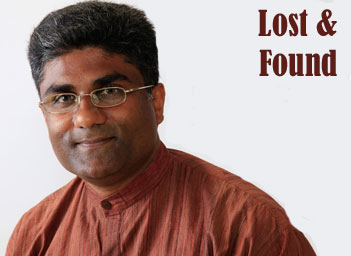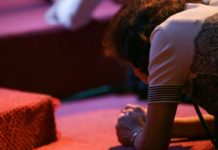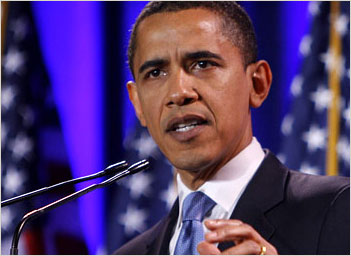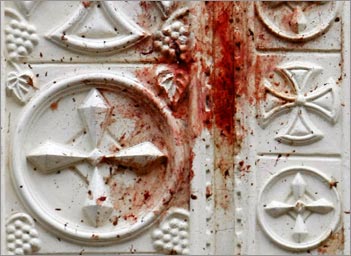FOR centuries, Thomas, the disciple of our Lord Jesus Christ, has been represented as the patron and forerunner of all skeptics and doubters and grumblers and fault-finders. That, I think, is quite unfortunate.
I want to clear this image of Thomas for two reasons. The first is I personally feel that history has been cruel to him. Now, look at Peter. He denied the Lord, yet came back stronger than before and history has been ever since kind to him. John, the disciple identified as the closest to Jesus, ran away from him when he ought to have stood beside Him and braved the arrest. Despite this act of betrayal, God in His infinite wisdom chose to reveal what will happen in the coming days to him.
All that Thomas asked was something most of us can identify with. He wanted proof of the resurrection. Is there anything wrong with that? God has made each one of us with thinking and areasoning mind and he wants us to use them for authentication and evidencing.
See all the other disciples saw Jesus before they believed. Unfortunately, Thomas missed that meeting because he was out and about. Also please remember the Bible does not indicate that Jesus was hard on Thomas for that.
I also want to acquit Thomas for a reason more personal to me. He took a boat ride somewhere around AD 54 and came to my country – India. And because of that trip he made, we have faith in India tracing back its origin to 2000 years ago. I thank God for that legacy I carry in me.
But we have to admit that Thomas cast a dark shadow over the apostles’ joy of resurrection. The others tried to remove the dangers of the shadow of disbelief. Peter came and explained his seeing of the Lord. And Andrew came. Then John came. The disciples from Emmaus also came, but it was all in vain. Thomas was obstinate. He had laid down his condition, and he was not about to back down.
“I have to see the tupos (nail marks) in his hands and put my fingers where his nails were.” The word tupos refers to the mark of a stroke or a blow. In other words, he said he wanted to see the actual marks left behind from the actual nails used to penetrate Jesus’ actual hands.
Personally, I don’t really know if this was lack of faith on Thomas side, or an insightful display of conviction. Perhaps, there was something deep down in him that wanted to touch the Lord, wanted to authenticate his passion and suffering, something in him that wanted to feel his wounds. This is just me talking. I am also sure that even amidst this sea of doubts there was this simmering expectation in Thomas, born from the heart that became the first and only confessor of our Lord as “My Lord and My God.”
Let me also give a new twist to this statement. I believe this statement was an honest reflection of who we are. It reflects the down-to-earth struggle of every believer that makes us ask “Where are you Lord in flesh and blood?” Struggle that makes us say “I want to see you and feel you before I believe.” There was no doubt that Thomas’ doubt was conceived in sorrow and born in painful hesitation. He had lost his Master to this horrible tragedy. If you remember, at one time Thomas wanted to go and die with Jesus; he wanted to identify Jesus even to the point of death.
All that Thomas is saying is this: ‘I want to see and feel the wounds of my master.’ He does not say ‘I want to gaze into his eyes or I want to talk to him or I want him to perform a miracle before me’ or anything like that.
Thomas, to me, did not really want a proof of Jesus’ appearance but wanted an authentication of Jesus’ suffering and the resurrected body that suffered for his behalf and the whole world’s behalf. He is simply saying: ‘I want to feel and touch the messiah who suffered on my behalf and share the fellowship of his suffering.’
‘I will not believe unless I see his nail marks and put my fingers were the nail was.’ What in the world are you saying here, Thomas? You want to put your fingers where the nail was? Even 2000 years ago in that culture it was a taboo to do that. Yet, Jesus was not harsh on Thomas. He asked Thomas to come close to him and feel his wound. What Jesus in essence said is something like this: ‘Believe that I have endured the cross for your sins and the sins of the world. Believe that the grave could not hold me and I have risen again. Believe that these wounds are real and by these wounds you have been real.’
Let us imagine if Jesus had no wounds to show Thomas, just the resurrected Christ without any marks or wounds. What would have that done to Thomas’ faith and our faith? Then all becomes ‘maya’. Do we want to believe in a God who just gave us an impression of his suffering? Only a God who loves us to the extent of taking upon himself our real wounds and our real pains, especially innocent suffering, is worthy of faith. So paradoxically Thomas’ doubt comes to our advantage here. It helps to purify all false concepts of God and brings us closer to the actual wounds of our Savior, wounds he endured for you and me.
Unfortunately, many of us do not want to gaze upon the wounds of Jesus nor feel it. We want to skip that part of it and go directly into the dancing and singing on the golden streets of faith. When we do that then our theology fails to understand sufferings. If we fail to identify with the Messiah who has taken upon himself the wounds of an injured humanity or if we fail to recognize a Messiah who took the wrath of God on himself, then we will take our suffering in the wrong sense. We will say as Christians we are not supposed to feel weak and tired. Our lives would be controlled by guilt and fear. Tsunamis and conflicts and deaths become the wrath of God which we cannot comprehend.
But let me assure you every time a tornado strikes, every time you are hurt physically or reach a low spot in life, every time we encounter evil, thanks to Thomas who had the audacity to venture into the wounds of our Lord, we know that our Savior encountered evil much more than we could imagine. Yet he overcame it with the power of his love. Because of that, we can overcome evil and disappointments with the same strength that Christ promised us. And like Thomas, we could cry out to Jesus in our times of need and say, ‘Lord show me your wounds that I may gaze upon them and feel comforted.’
Like the wounds of Jesus were an obstacle for Thomas’ faith, perhaps the wounds that life has inflicted upon you are also preventing you from believing Him.
When the world saw the wounds of Jesus, they saw the apparent failure of the Lord. However, the very same wounds became signs of a victorious love through Thomas’ encounter with the Risen Lord. These wounds that Christ received for our sake help us to understand who God is. May the Lord’s wounds also help us repeat along with Thomas, ‘My Lord and my God!’
Read more columns by Mathews George
Rev. Mathews George is a pastor at Tucker Street Church in Greater Memphis Area in the US. He has mentored many people around the United States and India. He believes that only in understanding and accepting Jesus into lives true healing takes place. He can be reached at his email ID: mathewsown [at] gmail [dot] com



















